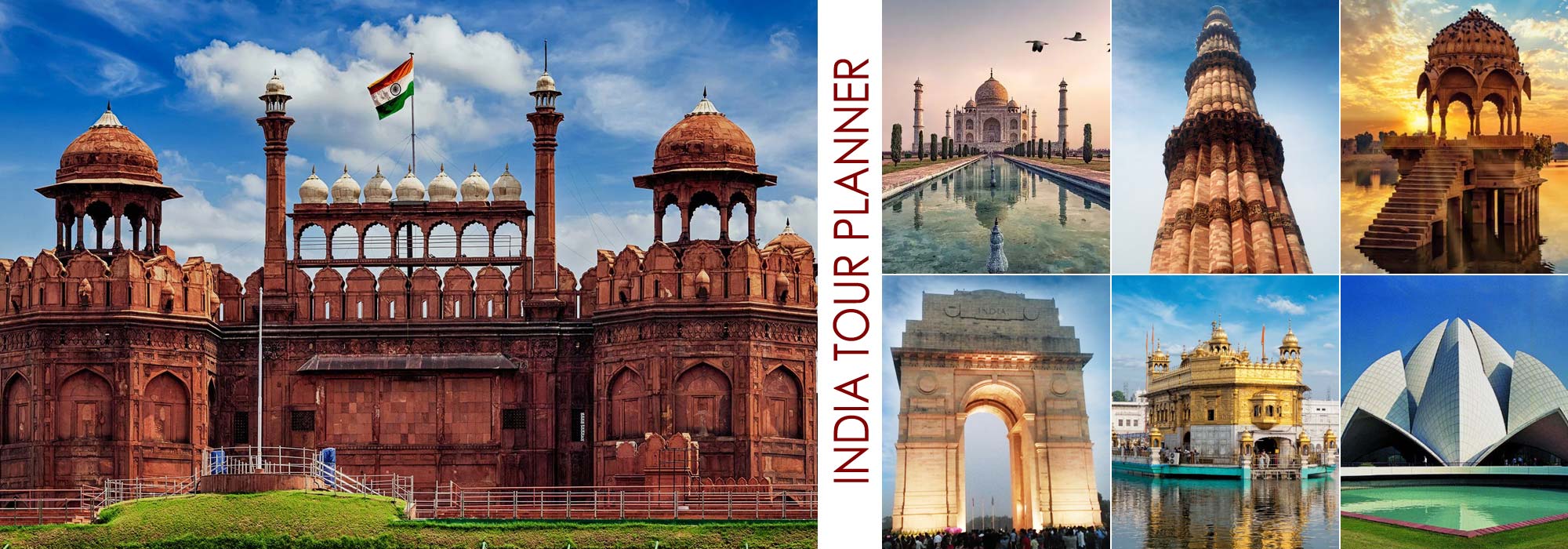
Delhi Tourism
Delhi is a destination of every traveller’s dream. Its mystical presence makes it a favourite destination for both domestic as well as international tourists. Delhi has witnessed rise and fall of many great empires, glimpse of which is still present in its monuments and streets that have been walked and inhabited by great warriors since decades.
Dotted with many mesmerising architectures, Delhi is a dream destination of history and architecture lovers. Its historical splendour is accompanied by modern facilities and comfort of latest facilities, transportation and commutation facilities. This makes Delhi a destination worth visiting by all, irrespective of age and interest.
History of Delhi
Delhi history is an aspect that makes the city irresistible. History peeks out from every corner of the city. It can be seen in the historical buildings and its ages-old culture and traditions. History of Delhi goes beyond the modern historical data. The city has been mentioned in various epics and religious texts as well. From epic Mahabharata where it has been mentioned as Indraprastha to colonial era, it has an in-depth history that can be explored on a Delhi tour.
Delhi has seen many dynasties and reigns, influence of which can be seen in various architectures and culture. It was under the Tomara rulers. It was then captured by Afghan invader Muhammad Ghori from Rajput kingdom in 1192. Later it was ruled by Khiljis, Tughlaqs, Lodi dynasty, Mughals and then by British.
From 1911, when the capital of British India was shifted from Kolkata to Delhi, it served as a centre of power for colonial India. It also played an important role in the freedom struggle of Indian against the British rule. Eventually, after India’s independence in 1947 it was officially declared as the capital of free India. Since then, it has witnessed many important events of free India as well.
Humayun’s Tomb
This beautiful landmark was built between 1569-70 and serves as the tomb of Mudhal Emperor Humayun. The enchanting mausoleum was inspired by the Taj Mahal and is one of the first ever examples of Mughal architecture in the country. The design takes inspiration from Persia, with its bold red sandstone, white marble dome and arched alcoves.
The gardens are split into four areas, which surround the tomb itself and feature flourishing flora and flowing water. Declared as a UNESCO World Heritage site in 1993, this site should rank highly on your list of must-visit Delhi locations.
The Red Fort
Take a trip over to Old Delhi to see the awe-inspiring, towering red sandstone structure of the Red Fort. Built in 1638 as a show of the Mughal emperors’ power, the massive walls were intended to keep out invaders.
Today, they attract crowds of tourists, who come to marvel at the gorgeous Lahore Gate and explore the many rooms, which include the Drum House, Pearl Mosque, Royal Baths, Palace of Colour and the stunning white marble surroundings of the Hall of Private Audiences. Visit at evening to catch the dazzling sound and light show.
Qutub Minar
This 74-metre-tall structure is constructed from red sandstone and marble. It is the second tallest minar in the entire country, coming second to Fateh Burj, and features a circular staircase inside, with 379 steps leading to its peak. The Qutub Minar can be found at the Qutub Complex, which is a UNESCO World Heritage Site and home to several more significant historic monuments.
Swaminarayan Akshardham
The Swaminarayan Askshardham, also known as Delhi Askhardham, is a grand campus of spiritual and cultural influence. This is one of the largest Hindu temples and features an abundance of traditional Hindu and Indian displays. Situated near the banks of the Yamuna river, this towering temple attracts around 70% of all Delhi tourists, who come to witness the Sahaj Anand water show, traverse the thematic garden and explore the three exhibitions held there, which include an IMAX film on Swaminarayan’s early life; a cultural boat ride; and the Hall of Values.
India Gate
This memorial is dedicated to 82,000 soldiers who served the undivided British Indian army and lost their lives during the First World War. Designed by Sir Edwin Lutyens, the gate is reminiscent of Paris’ Arc de Triomphe and displays the names of 13,300 Commonwealth servicemen. A simple shrine was built under the India Gate structure in 1971.
Known as Amar Jawan Jyoti, meaning the Flame of the Immortal Soldier, this marks the Tomb of the Unknown Soldier.
 +91 9799050299
+91 9799050299 
